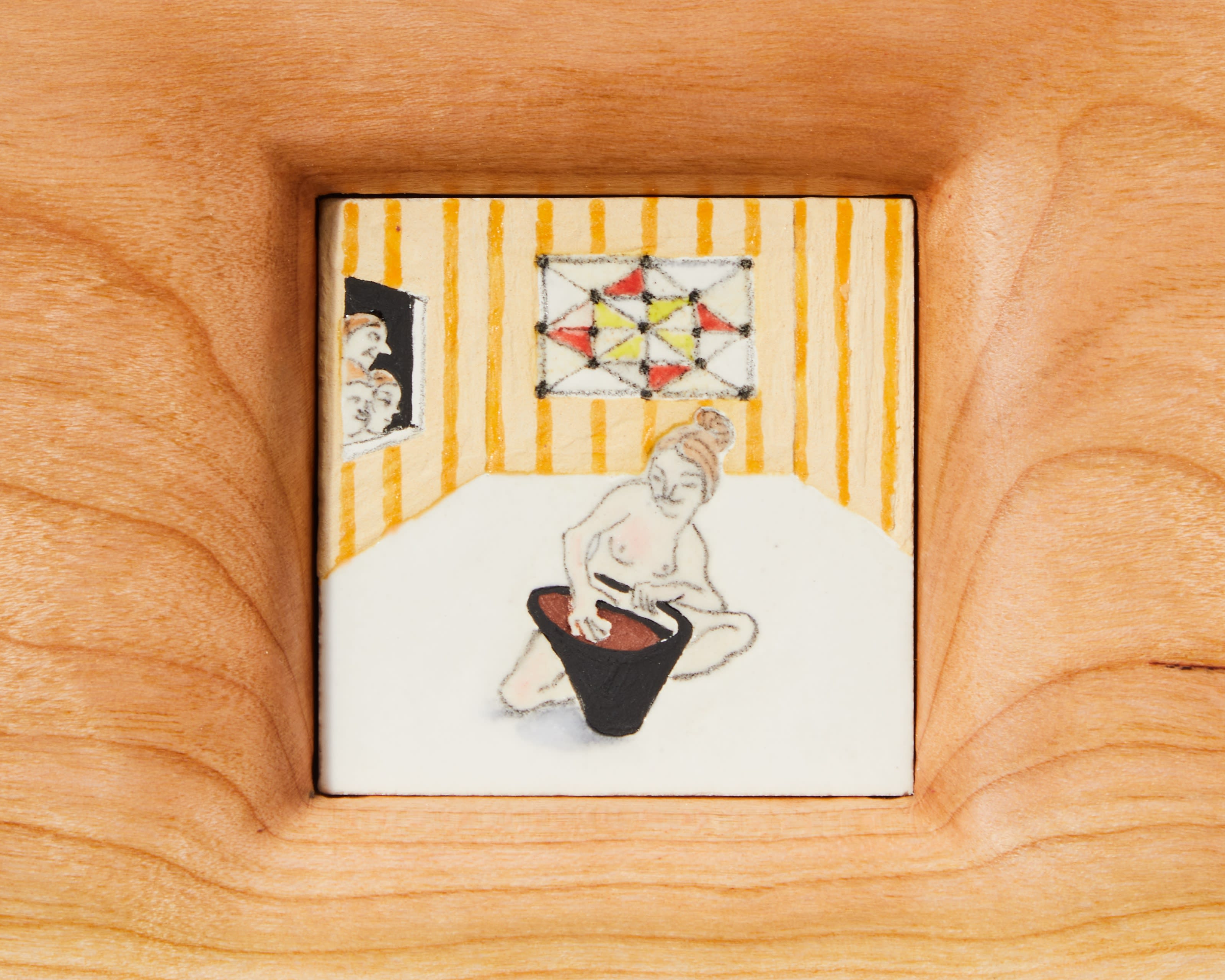
Expanding on craft traditions, the sgraffito vases and porcelain tile vignettes in The Mortal Coil present stories of transformation, invisible labor, and empowerment. The exhibition begins with a new series by Em Kettner, an artist and writer based in Richmond, CA, whose work explores what it feels like to be a body continuously under study. Hung sequentially, Kettner’s intimate, single-tile mosaics tell the story of a figure who crafts a ceramic cocoon beneath the leering gaze of looky-loos. In Quilter’s Circle, Kettner invites us to suspend our disbelief and dive into the secret interior of the ceramic cocoon, where a group of quilters sew assiduously.
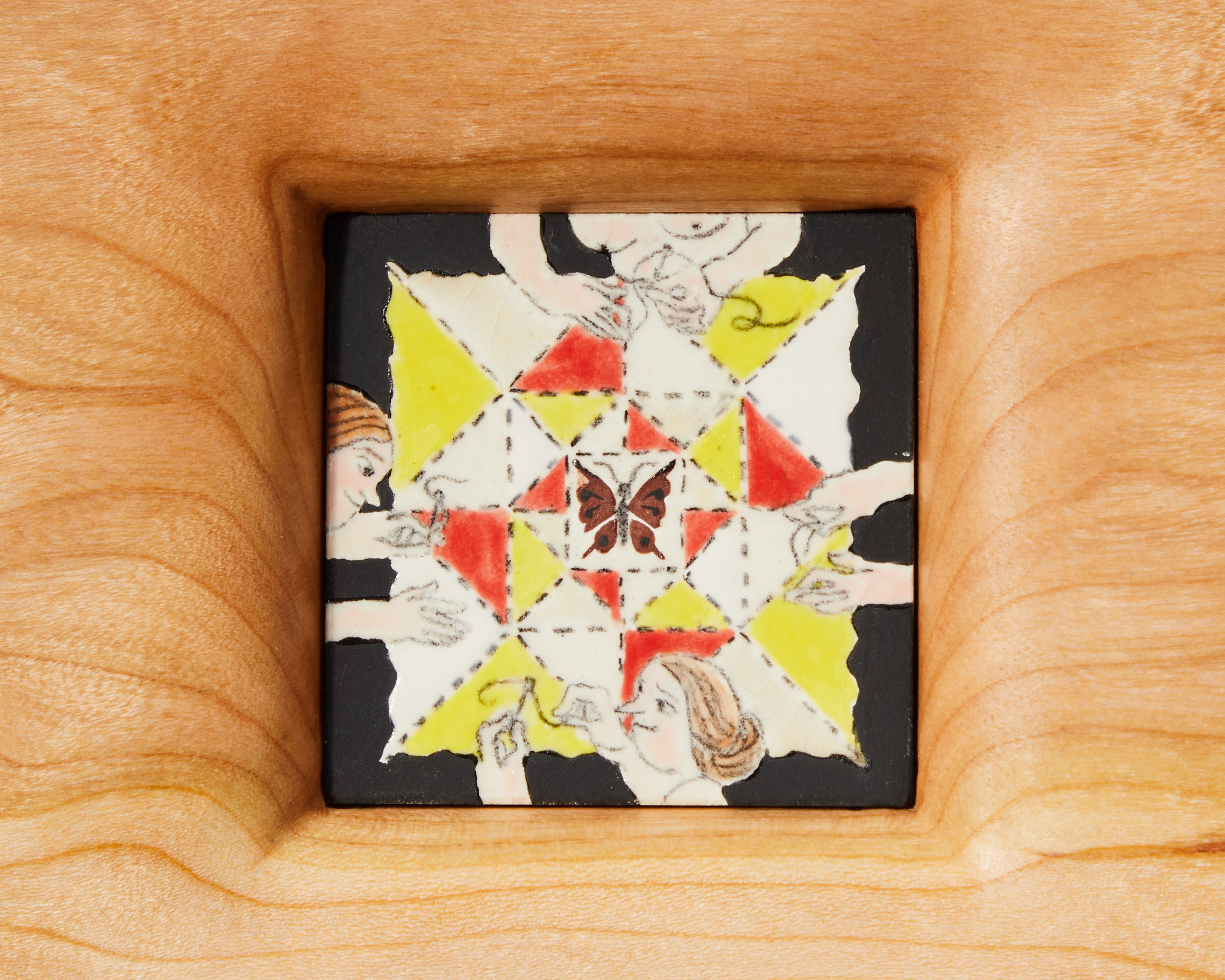
In Fresh Threads, a character overcome by curiosity dons the newly finished quilt as a cape and flees outside into the radiant glow of a full moon in Moon Moth. Each of the nine miniature scenes serves as a modern votive that offers viewers a private glimpse into tales of craft and curiosity. Together, Kettner’s playful vignettes of the artistic process reveal the transformative power of creation and the at times awkward but humorous relationship between artist and viewer.
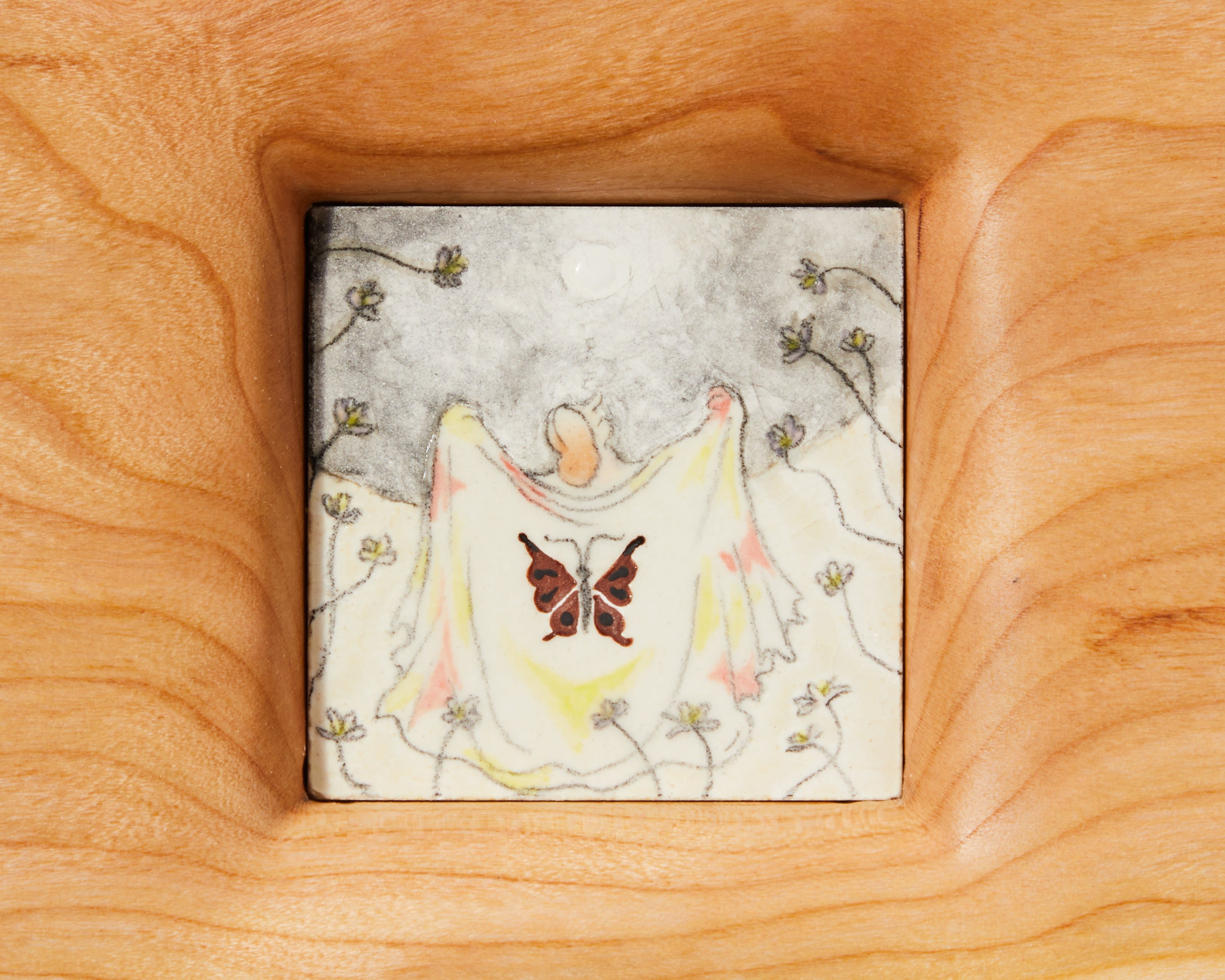
The moon motif of Kettner’s final vignette sets down in Ekin Balcıoğlu’s Desire and draws us into the orbit of the artist’s mythology-inspired sgraffito ceramics. From the drifting octopod of Desire to the fledging phoenix of Phoenix Rising, Balcıoğlu’s figures echo the timeless iconography found on pottery from antiquity.
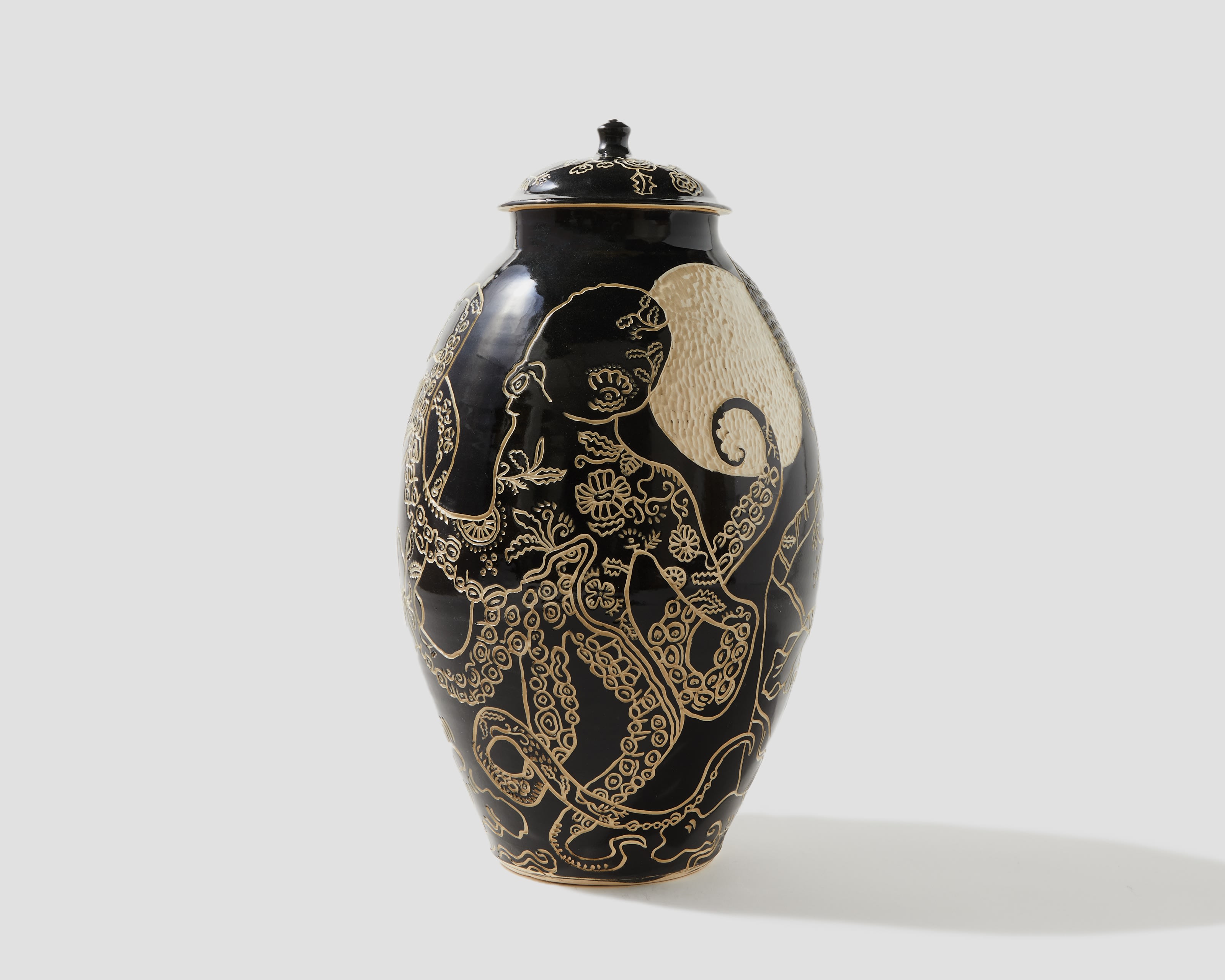
Her surgically precise incisions reframe popular myths from Western culture by shifting the narrative focus of popular stories from male heroes to female deities, like Lupa from the Founding Story of Rome recreated in She Wolf.
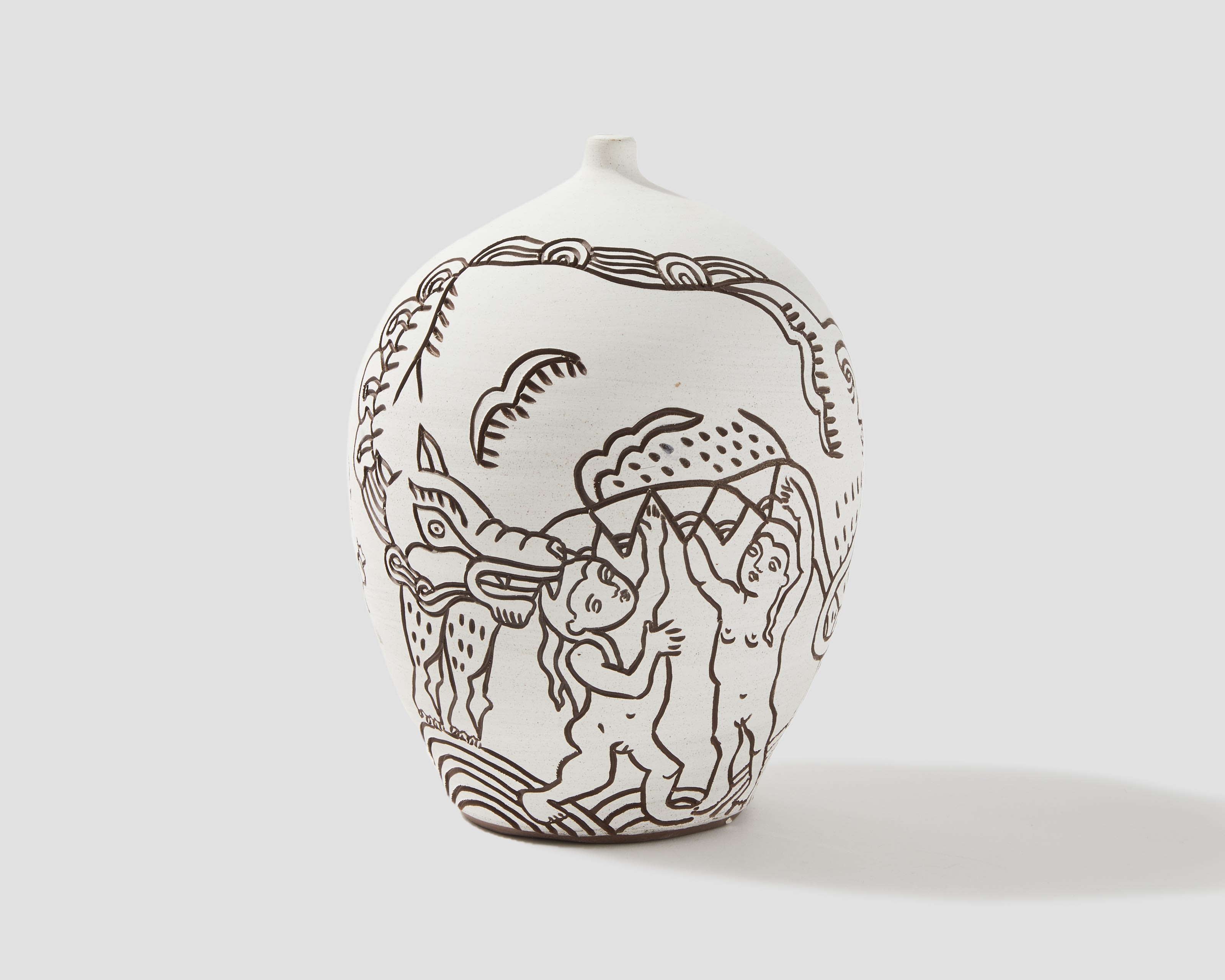
Grecian friezes like those depicted in Samsara and Nirvana tap into Balcıoğlu’s personal belief system but also represent the long lineage of predominately anonymous ceramicists who have embedded their beliefs in their creations and are to thank for our current understanding of where we come from. Together, these new works make mythology less of an impenetrable riddle, and more of a fluid resource for interpreting quasi-fixed social values.
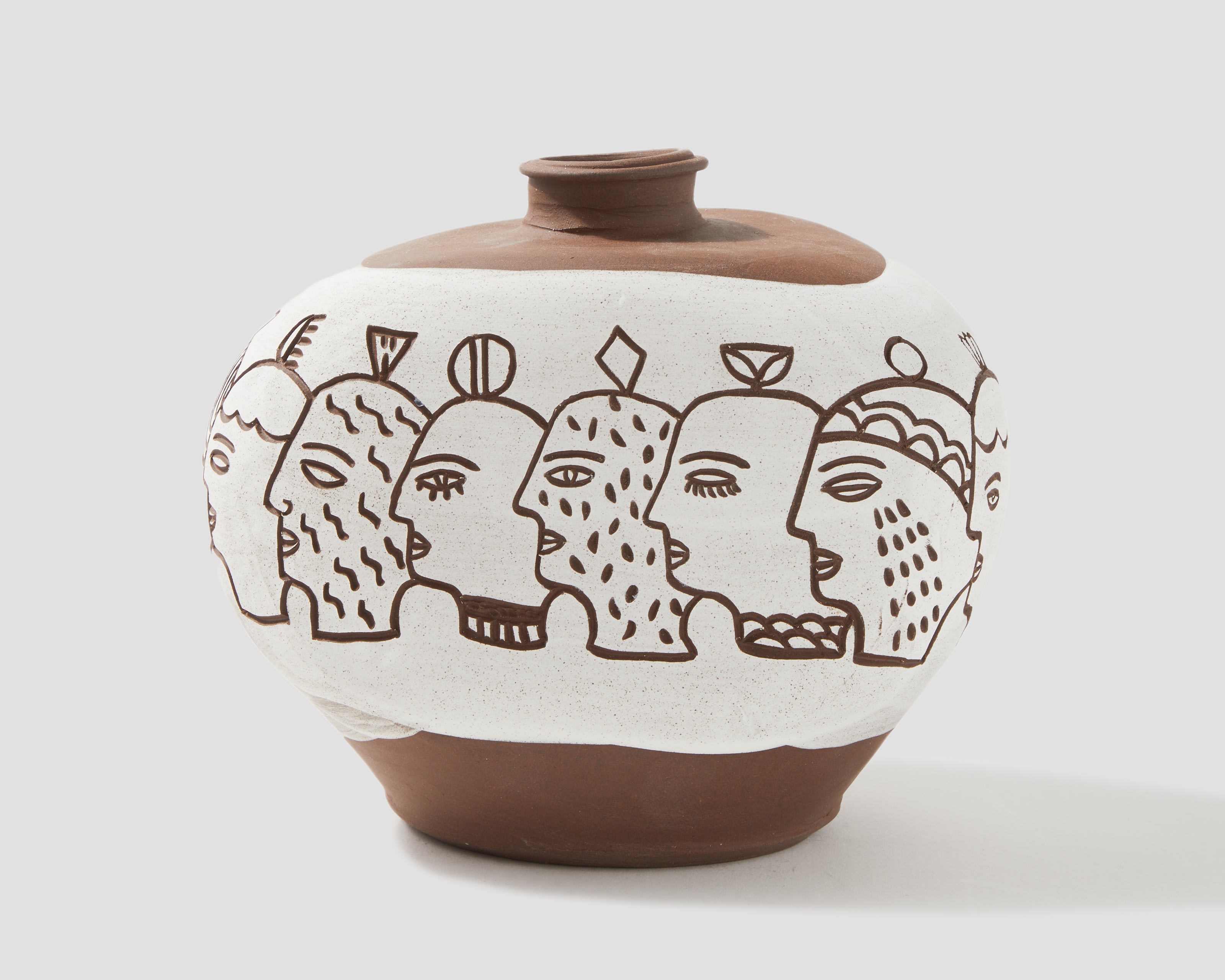
“It’s as though the potter Em wonderfully and humorously portrays has created these pots, and then those pots step forward to tell their own stories of creation, transformation, and mythology,” says Balcıoğlu. “What strikes me most is this interplay between presence and invisibility. In Em’s work, Em herself is invisible, but we get an intimate glimpse into the potter’s life and process, full of humor, genius, and unexpected moments. In my work, the potter is invisible, too, but the vessels carry the weight of creation, becoming the storytellers in place of the artists.”
The Mortal Coil’s narrative themes intertwine in part because of Kettner and Balcıoğlu’s friendship, which further underscores the generative link between community and craft. Historically, painting, sculpture, and printmaking have been the protagonists of visual culture. The Mortal Coil demonstrates how craft, often relegated to the far corner of art history, has long been responsible for the objects that inform our understanding of material culture and art.
—Spencer Linford, communications
View All Works
We thank François Ghebaly for their help and collaboration in bringing Em Kettner’s work to the Southwest. We thank Max Massey for his help in bringing form to Balcıoğlu’s ceramic vessels.